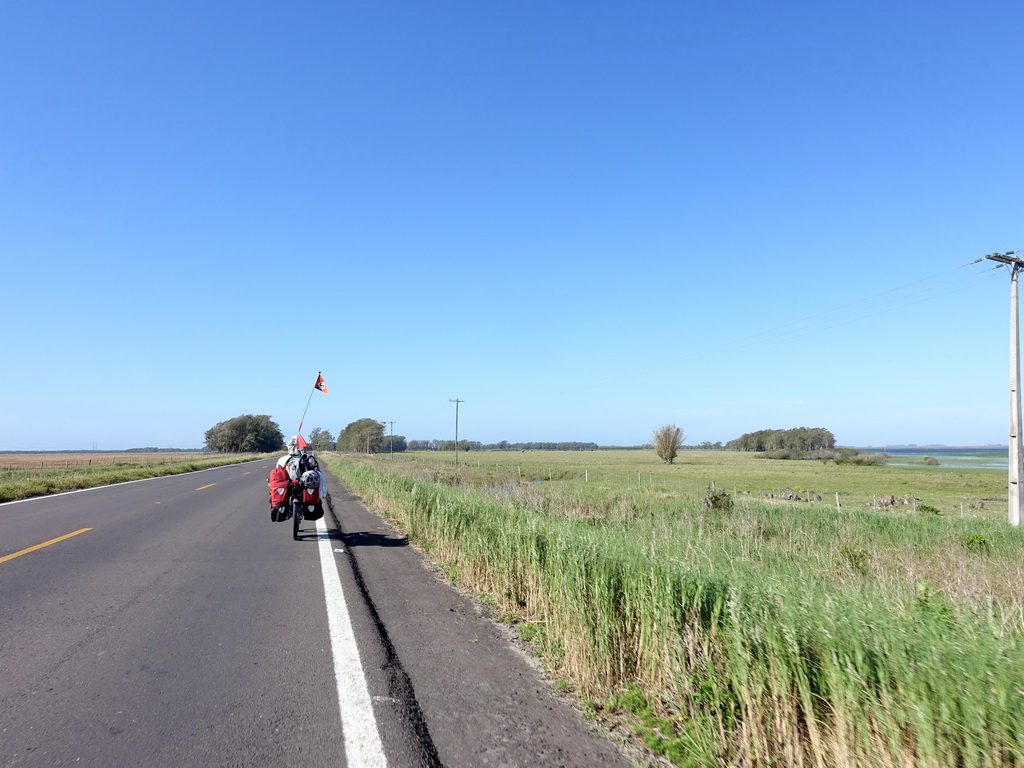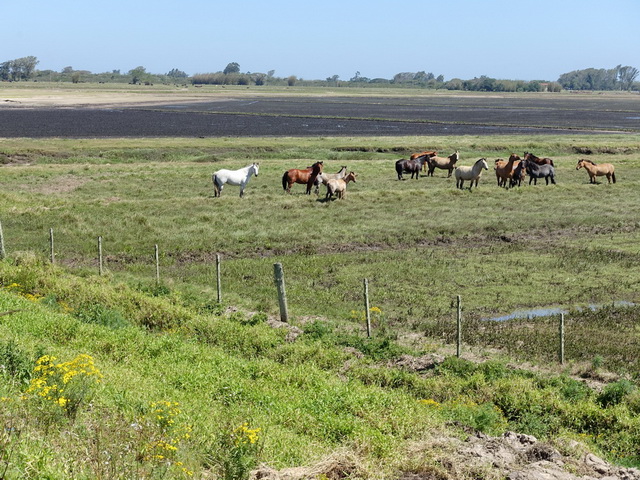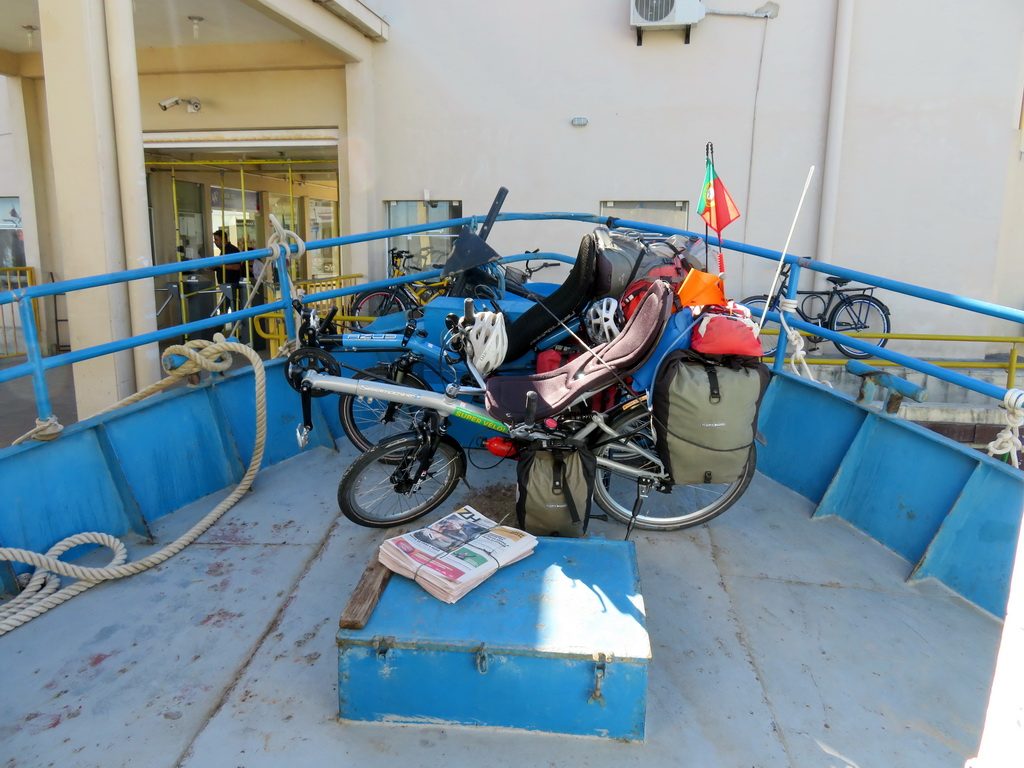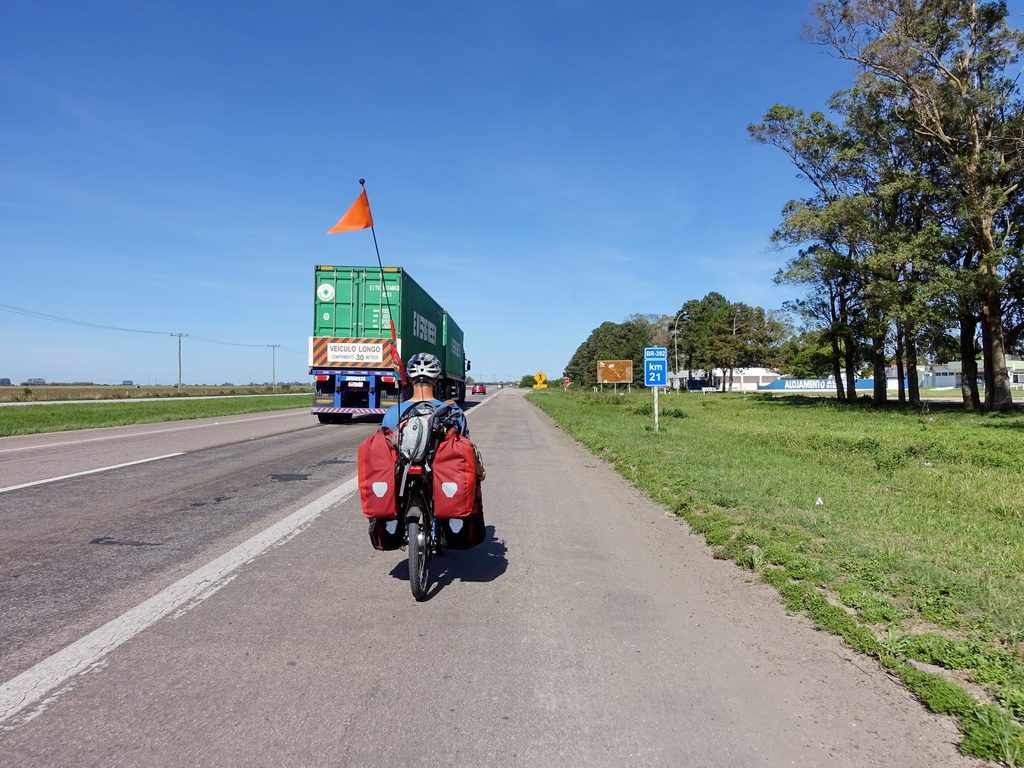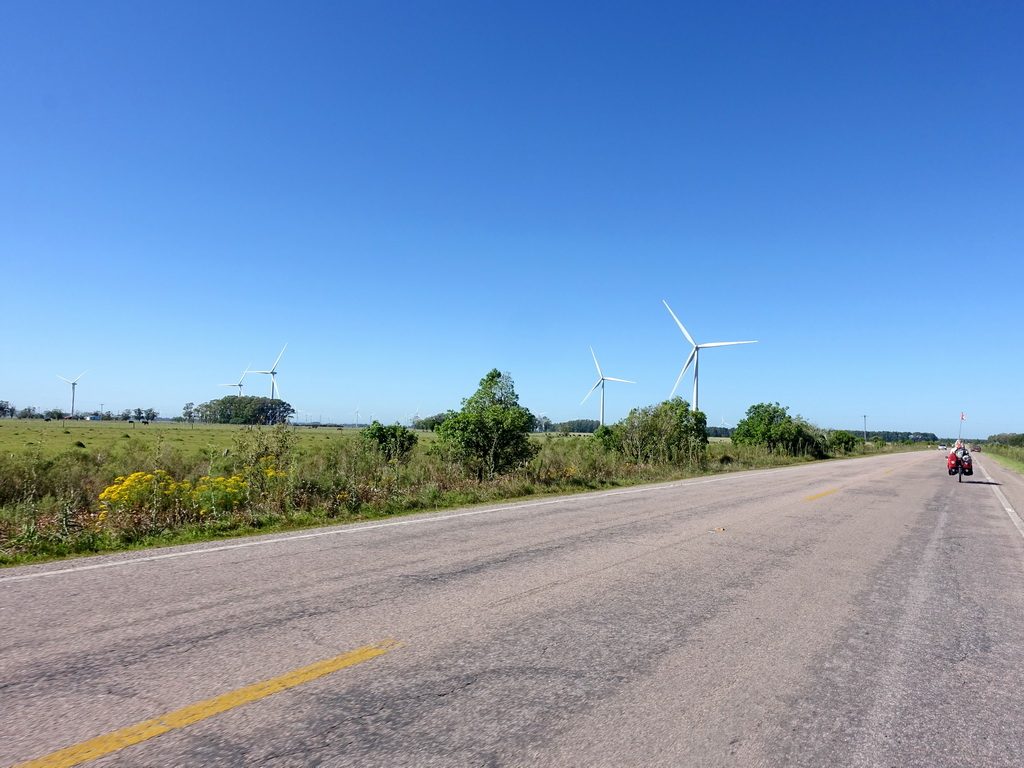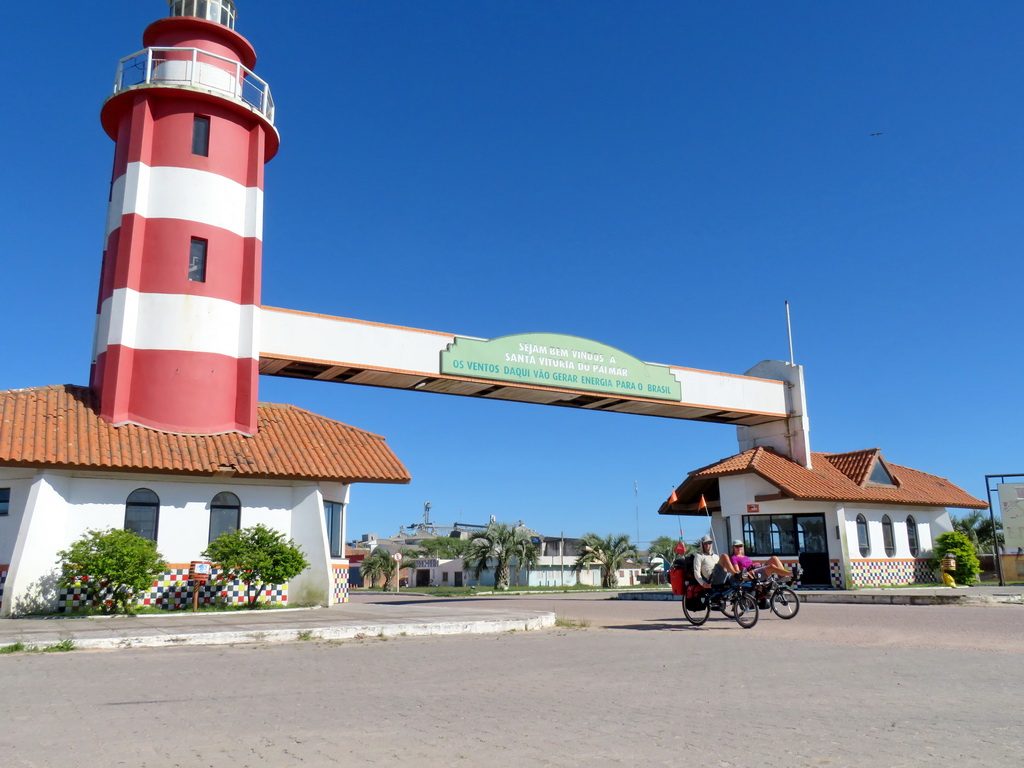This is the first post of a new series on our blog, the So, how was it? posts. They’ll be wrapping up our experience by country, how it was to cycle, the roads, the drivers, the food, the weather, the people… So here we go for Brazil.
The route
We cycled from Porto Alegre, where we had arrived by plane from Europe, to Chuí, at the Uruguayan border, from the 29th of October to the 6th of November 2016. Our warmshowers host Thiago in Porto Alegre had cycled this route before and gave us many useful tips. Another useful tip was on how to get out of the city of Porto Alegre: From the centre, we joined Avenida Ipiranga which has a cycle lane for some of its length, but the parts where we had to cycle on the road were not too bad. At the end of the cycle path we joined the ERS-040 towards Agronomía and Viamão. There was quite a bit of traffic but the road was large and we felt we had enough space. After Viamão things got more quiet and we finally felt we were getting out of the city.
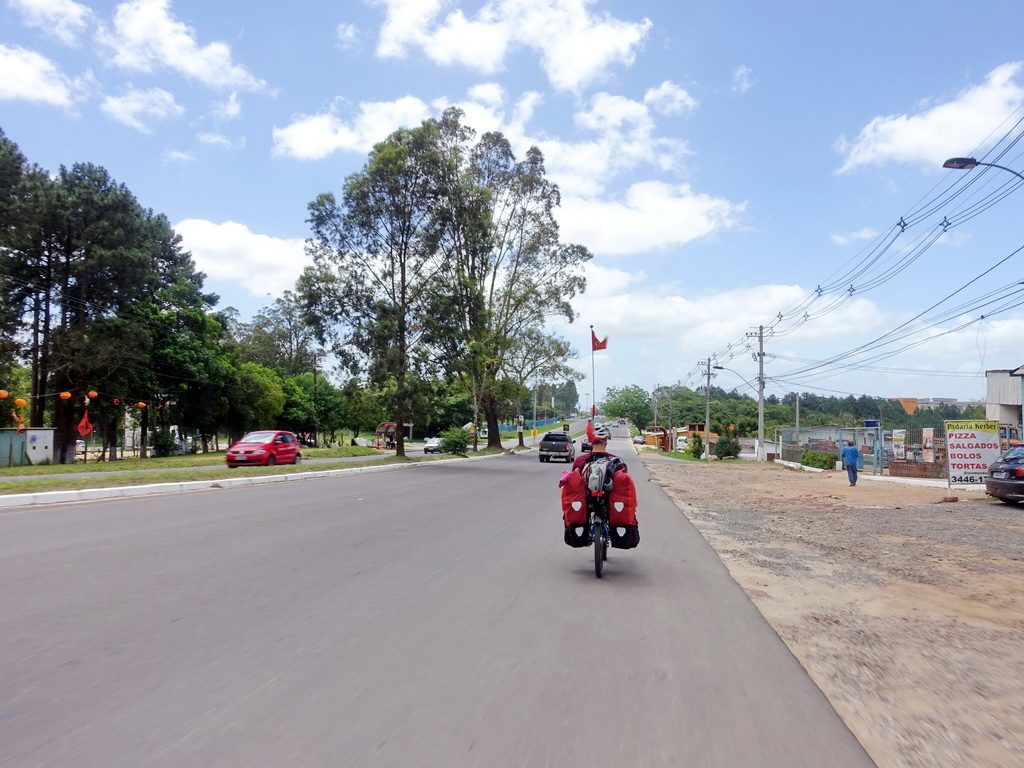
We followed this road all the way to Capivari do Sul. At the beginning there were still a few small hills, but then the countryside became flatter until it resembled a pancake, and it was going to stay like that for the remaining time in Brazil. In Capivari we turned south on BR 101 and that’s when things got even more quiet. Cycling the 101 was comfortable throughout, the road was mostly in very good condition, except for a small stretch after Mostardas which had quite a few holes (but this had the advantage of slowing down cars and trucks). There was an emergency lane most of the time but it was often not comfortable to ride on. Traffic was light enough for us to ride side by side most of the time.
The landscape was composed of pastures with cows, horses and sometimes sheep, some fields, a few small woods, and some small villages and isolated farm houses. This region is also rich in lagoons so there were a lot of birds.
Road 101 ends in São José do Norte where regular boats make the link to Rio Grande. There are bigger ferries for cars and smaller passenger ferries. Both take bicycles on board, we took the smaller ferry and getting the loaded bikes on and off was not a great deal, especially as we got help from the crew.
To get from Rio Grande to road 471 to Chuí we had to take road 392 for 5 kilometres, which was marked as a highway on Open Street Maps, but as there was no other alternative (other than non-asphalted roads) we gave it a go. From the centre we headed towards Avenida José Bonifácio, and we even encountered a cycle path. We then followed this road until it joined the 392, which was a 2×2-lane road with quite a bit of truck traffic, but there was a very large emergency lane so we felt comfortable. It certainly wasn’t a highway, as there were bus stops along it and pedestrians crossing.
In the village of Quinta the road to Chuí was clearly signposted. It was reasonably quiet but not as quiet as we had expected, as people had told us that we would really be in the middle of nowhere. This road has some very long straight parts and the countryside resembles the one on route 101: flat fields, lots of cows and horses, small farm houses by the road, lots of birds. The highlight of this road was the Taim Ecological Station, where Capybaras (also known as giant guinea pigs) breed and live. We saw dozens of them, most of them alive, but also quite a few run over by cars (most of this stretch smelled very badly because of the dead animals).
The rest of this road was basically just very straight and very flat, almost boring, but it was also very relaxing in a way precisely because there was not that much to see. Just before Chuí there was is impressive wind farm, which is giving back some importance to the provincial town of Santa Vitória do Palmar.
Road 471 ends in Chuí where we crossed the border to Uruguay.
The drivers and the people
We were pleasantly surprised by the drivers in this part of Brazil, especially in the rural areas. They would always (or in 99% of the cases) give us plenty of space when overtaking and didn’t mind slowing down and waiting behind us when there was oncoming traffic. There were lots of friendly hellos and waves from drivers and people by the roadside. In cities and where traffic was denser it was obviously less comfortable but we felt they would always try to give us space. When we stopped for a break by the roadside, people would sometimes come up and talk to us, they were always very friendly, very interested in us and our trip (as opposed to Europeans who would often just keep staring at our bikes…), very respectful of our bikes, and would usually ask before taking pictures of us. We encountered the very friendly owners of a café-shop by the road, maybe 10 or 20 km after the turnoff to Lagoa Bacupari, which seemed to be a frequent stop for cyclists as they had quite a few stories to tell. Unfortunately, we forgot to mark the place on OSM, but if you ever cycle on this road you should stop by.
Basic necessities: water, food and sleeping
We carried our usual supply of water (5-6 litres of tap water plus 0.7 litres of tea) and we didn’t need to fill up during the day. There were small shops at more or less regular intervals although not all of them were open, and there were several petrol stations which usually also have a restaurant and shop. We always found a place to buy food in the morning, and we often stopped at a café for a second breakfast of coffee and torrada (toasted sandwich), and in the afternoon for a coke. There are quite a few houses along the road and also regular traffic of cars and trucks, so it would not have been a problem to get water in case we had run out or if we had had a technical problem. In the evening we either cooked ourselves or went to a restaurant (usually the only one open in a small town, usually serving very simple food).
We slept in campsites twice and in small hotels the rest of the time. Campsites were very basic but in nice settings and both times we were the only guests. The first one at Lagoa Azul (after the village of Aguas Claras) was not very well maintained and not very clean, but the views were very nice and it was quiet. The hotel quality ranged from very good (clean room, with hot water, fridge, breakfast – in Mostardas) to very poor (tiny room with dirty kitchen, unwashed bedsheets and unswept floor – in Lagoa Bacupari). We always (except for the cheapest options) asked for a reduction and the most we payed was 100 BRL for one night with breakfast.
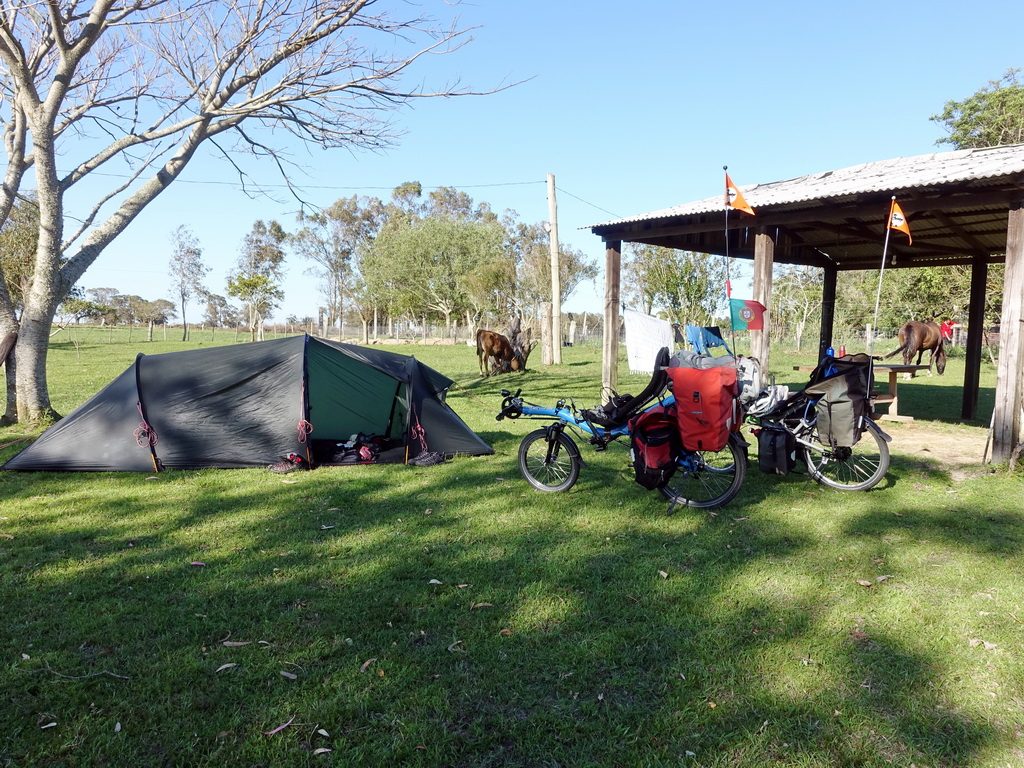
Dangers
Brazilians have a collective obsession with danger. This is somehow understandable as the country has very high violent crime rates. In big cities (such as Porto Alegre) there are obviously places to be avoided, and we always took the usual precautions. Outside the cities we found things to be a bit more complicated. People would always warn us about some hypothetical danger, which they were often not able to describe very well. It was usually some sort of “here it is safe, but there (wherever that was) you have to be careful, you might get robbed”. We also felt that generally people distrusted each other, such as when we were told to take our bicycles into our hotel room even in the smallest of villages where everybody knows each other. The owner of the second camp site where we stayed confessed that we were the first cyclists he ever accepted to stay at his camp site, as in his mind all cyclists (and motorbikers) are potential robbers and he fears they would steal stuff from his farm. He only accepted us because we were travelling as a couple and because we spoke Portuguese… (yay, we are very complementary, aren’t we?)
All in all, we didn’t feel in danger at any time. Only the centre of Rio Grande was a bit weird by night as there was almost no one in the streets.
There were a lot of dogs but they all belonged to farms and most of them were kept on a chain or locked inside a gate. Some came barking and running after us but it was only to make sure we were chased away, we never felt any of the dogs would actually bite. We also saw a few snakes but they were all dead, run over by cars! We don’t know if they would have been poisonous or not.
Orientation
We didn’t manage to find a paper road map in Porto Alegre, and we wouldn’t have needed it anyway. The route planning was straightforward as there was only one road going where we wanted to go. We just used the OsmAnd app and found it to be accurate, although still lacking a lot of points of interest (we added what we could and when we remembered).
Weather
We got sun, heat, wind, and rain. Most of the days were sunny and the sun is very strong here, so we needed a lot of sunscreen. We got one day of rain (with thunderstorms) and one afternoon of very strong side winds, which was very tough. It was never very hot, the maximum was probably around 30°C, and evenings were fresh (we were happy to have our warm sweaters). We started using Windguru which predicted the wind speed and direction quite accurately and which we found useful for planning to avoid the strongest headwinds.
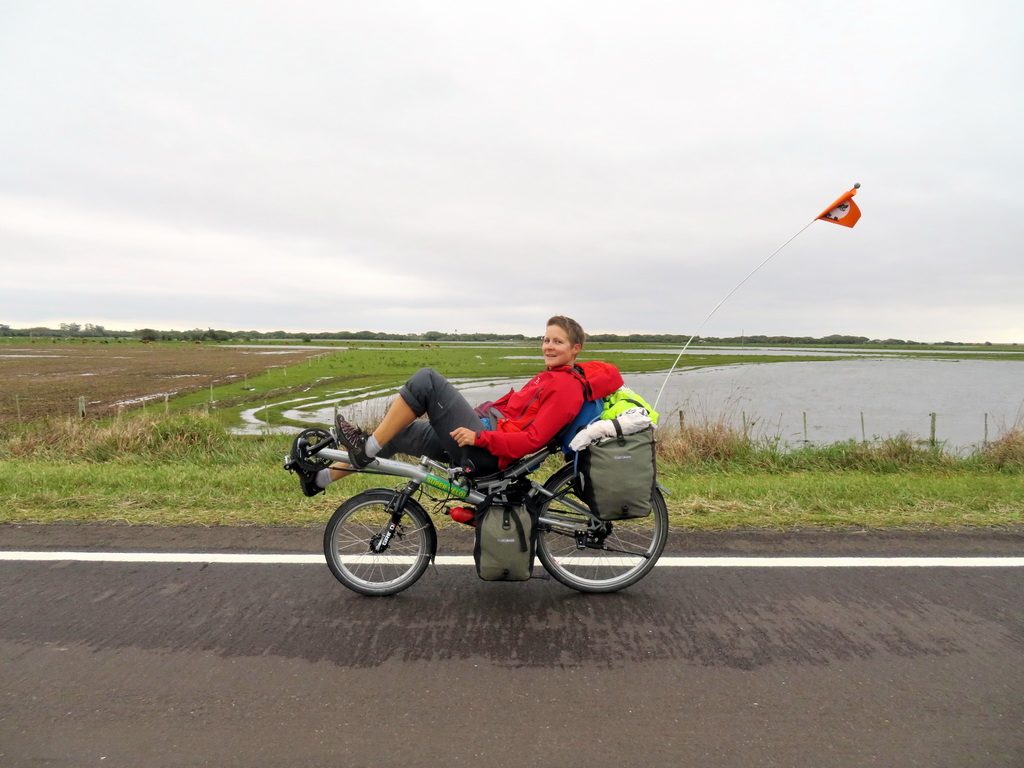
So, how was it?
Very, very nice, but too short. The flatness and straight roads could sometimes get a bit boring, but there were plenty of birds to watch, and we came across several small, provincial towns that we liked, especially Mostardas. Interaction with people was always very pleasant, whether it was just waving hello or for a longer discussion. For now we move on to other countries, but we clearly haven’t had enough of Brazil yet!






















